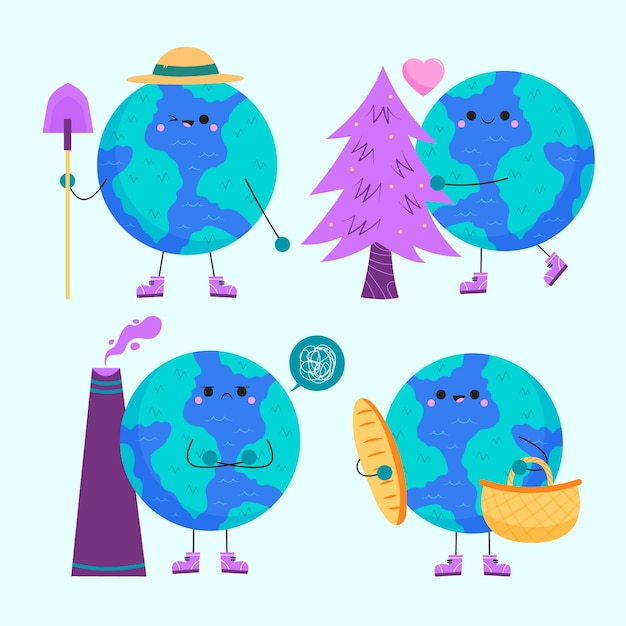Interesting Trivia about Earth

The Earth is the only known planet in the universe that has life.
Earth is 4.5 billion years old.
The Earth’s atmosphere weighs around 5.5 quadrillion tons.
More than 70% of the Earth’s surface is covered by water.
The Earth is the fifth-largest planet in the solar system.
Earth is the only planet with an atmosphere that has free oxygen.
The deepest ocean trench, the Mariana Trench, is located in the Pacific Ocean on Earth.
The Earth’s rotation is gradually slowing down by approximately 17 milliseconds per hundred years.
The Earth’s magnetic field protects us from harmful solar radiation.
The Great Barrier Reef, located off the coast of Australia, is the largest living structure on Earth.
The Earth is not a perfect sphere; it is slightly flattened at the poles and bulging at the equator.
Earth’s largest desert is the Antarctic Desert, covering around 5.5 million square miles.
The Earth revolves around the Sun at an average speed of 67,000 miles per hour (108,000 kilometers per hour).
The Earth’s crust is made up of several tectonic plates that constantly move and collide with each other.
Lightning strikes the Earth’s surface around 100 times per second.
The Earth’s highest point is Mount Everest, standing at approximately 29,029 feet (8,848 meters) above sea level.
Earth is the densest planet in the solar system.
Interesting Trivia about Earth part 2
The Earth’s diameter is about 12,742 kilometers (7,918 miles).
The Earth’s orbit around the Sun is not a perfect circle, but rather an ellipse.
Earth’s magnetic north pole is constantly shifting and has moved about 600 miles (970 kilometers) in the past century.
The Earth is the only known planet to have liquid water on its surface.
About 71% of the Earth’s surface is water, while the remaining 29% is land.
The Earth’s atmosphere is composed of 78% nitrogen, 21% oxygen, and the rest is made up of various gases.
The highest and lowest recorded temperatures on Earth were 134 degrees Fahrenheit (57 degrees Celsius) and minus 128 degrees Fahrenheit (minus 89 degrees Celsius), respectively.
Earth’s rotation causes the cycle of day and night.
The Earth’s Moon is the only natural satellite that orbits around our planet.
Earth experiences four seasons due to its tilted axis.
The Earth’s core is about 7,200 kilometers (4,470 miles) beneath the surface.
Earth’s largest volcano, Mauna Loa, is located in Hawaii and measures around 30,000 feet (9,144 meters) from its underwater base to its summit.
The Earth’s oldest rocks, found in Western Greenland, are estimated to be around 3.8 billion years old.
Earth’s atmosphere protects us from meteoroids, which typically burn up upon entry.
There are over 4,000 known species of fishes in the Earth’s oceans.
Earth’s gravitational force is about six times stronger than the Moon’s.
The Earth’s axial tilt is approximately 23.5 degrees.
Earth’s largest terrestrial predator is the polar bear, which can reach up to 11 feet (3.3 meters) in length.
Earth’s total land area is approximately 57 million square miles (148 million square kilometers).
The Earth’s average distance from the Sun is about 93 million miles (150 million kilometers).
Earth’s fastest winds are found in tropical cyclones, which can reach speeds of over 180 miles per hour (290 kilometers per hour).
The Earth’s deepest mine is the Mponeng Gold Mine in South Africa, reaching a depth of approximately 2.5 miles (4 kilometers).
Earth’s highest waterfall, Angel Falls, is located in Venezuela and measures about 3,212 feet (979 meters) in height.
The Earth’s atmosphere contains tiny suspended particles called aerosols that play a role in cloud formation and climate regulation.
The Earth has a molten iron outer core, which generates its magnetic field.
Earth’s oldest tree, named Methuselah, is approximately 4,848 years old and is found in the White Mountains of California.
The Earth’s largest living organism is a fungus called Armillaria ostoyae, spanning over 2,385 acres (965 hectares) in Oregon.
Earth’s highest lake, Ojos del Salado, is located in the Andes Mountains on the border of Argentina and Chile, sitting at an elevation of 20,965 feet (6,390 meters).